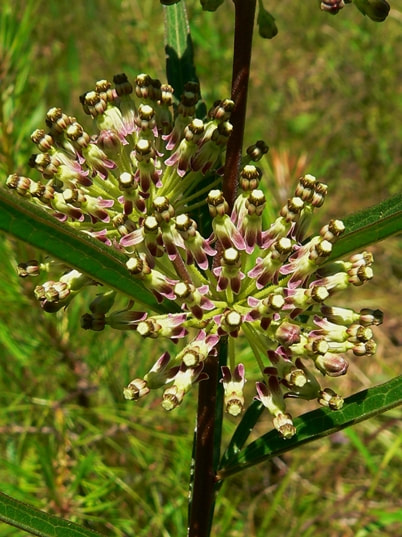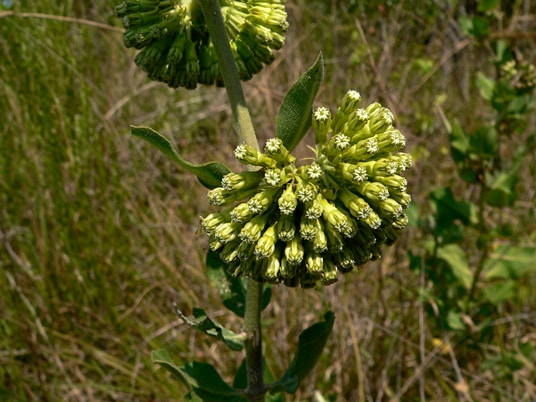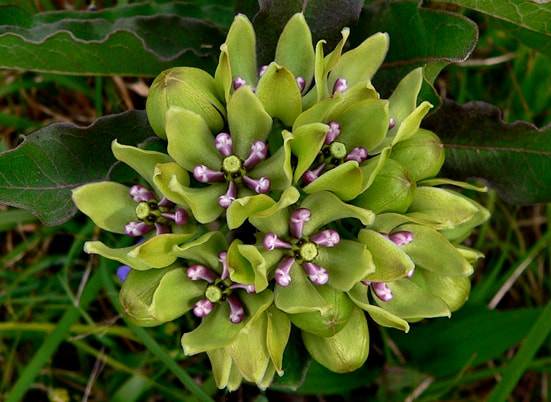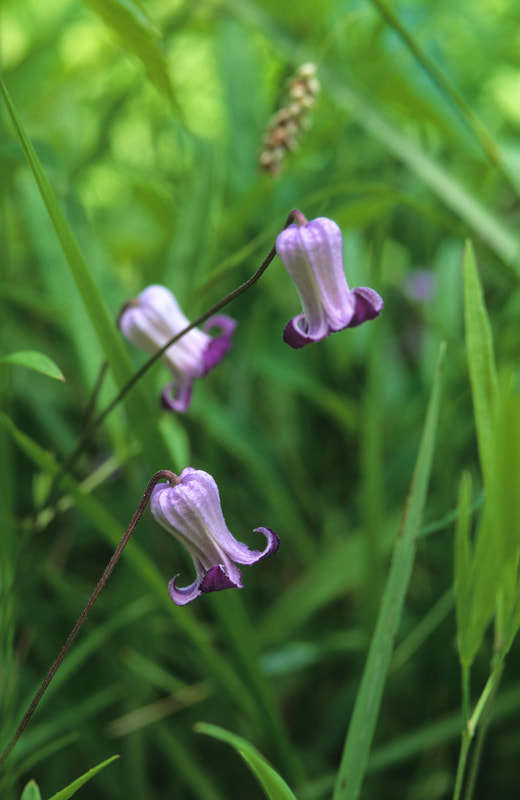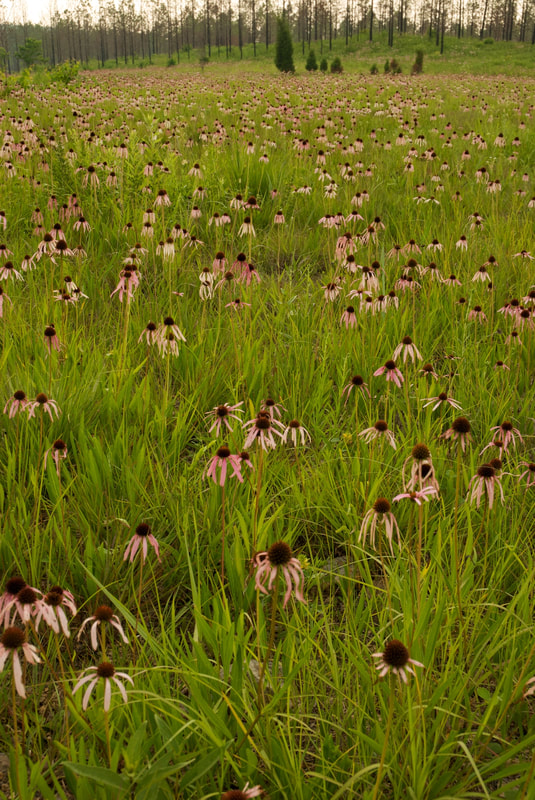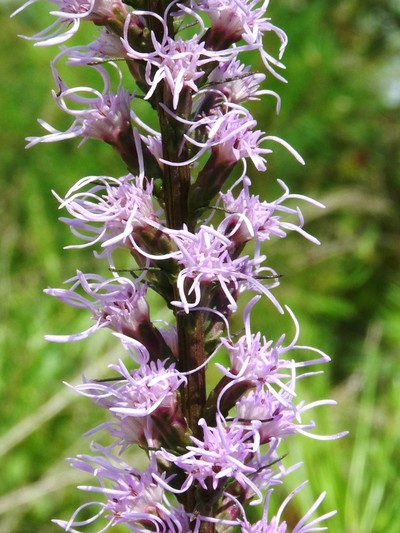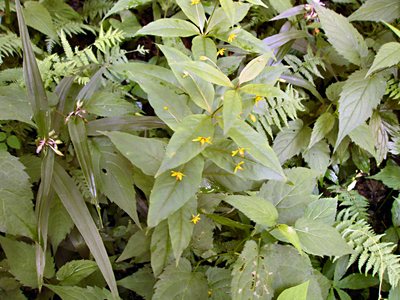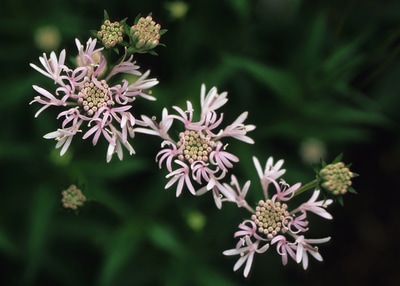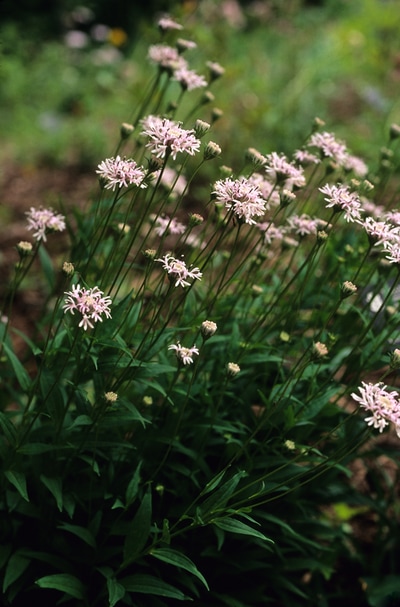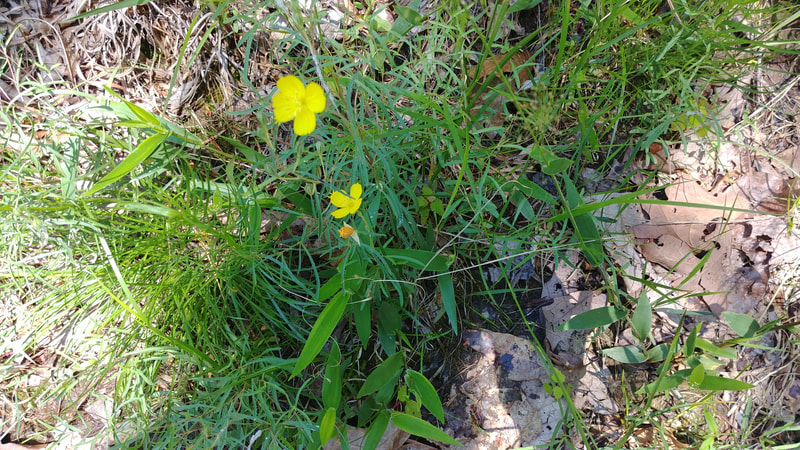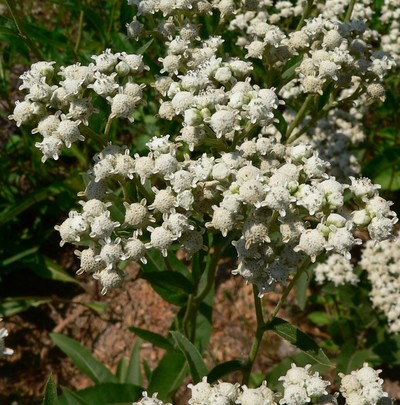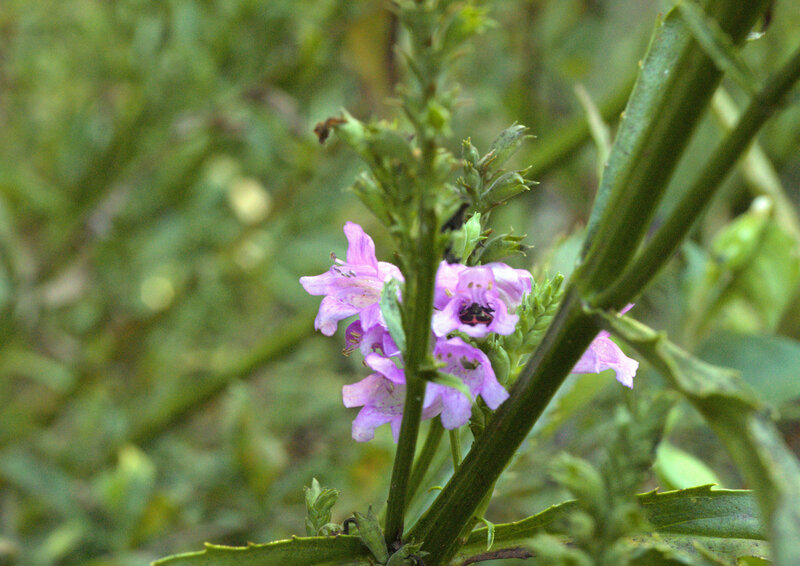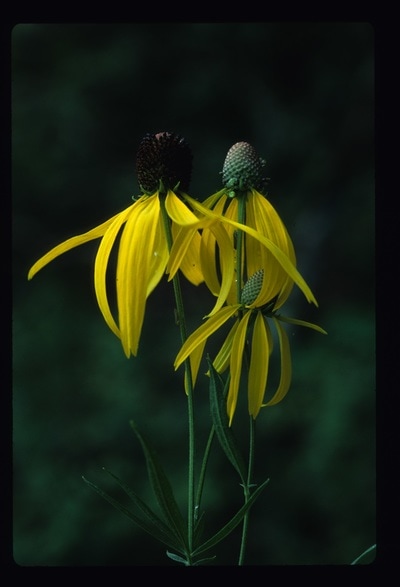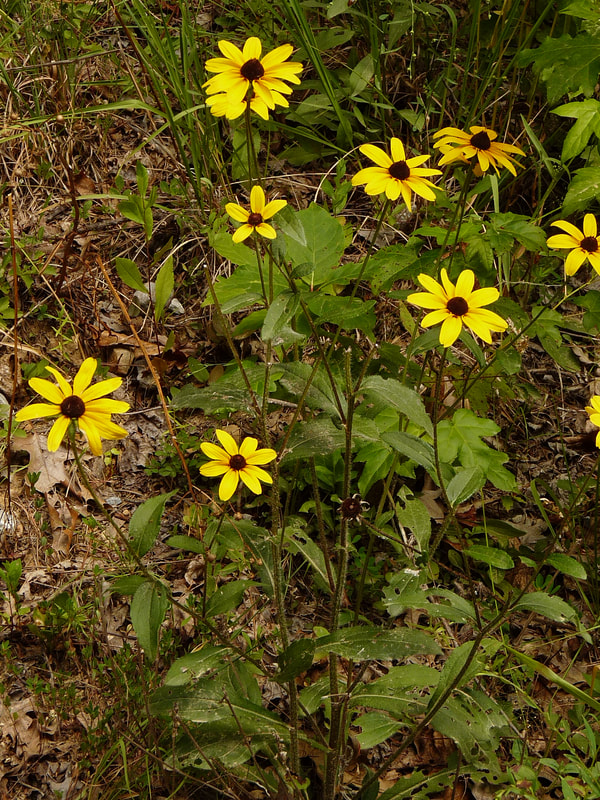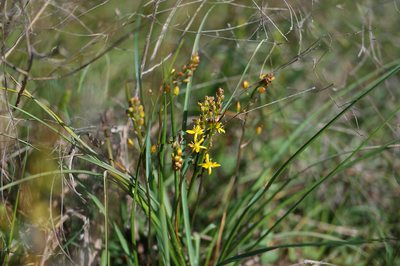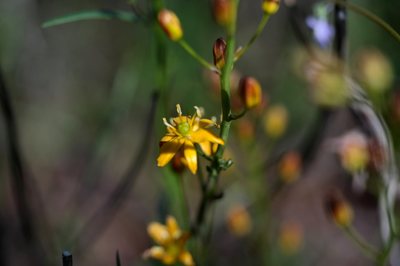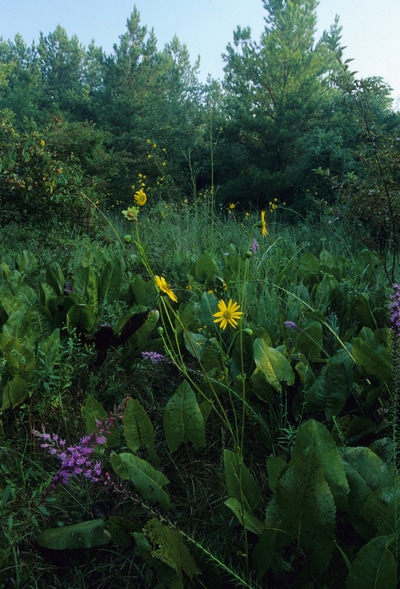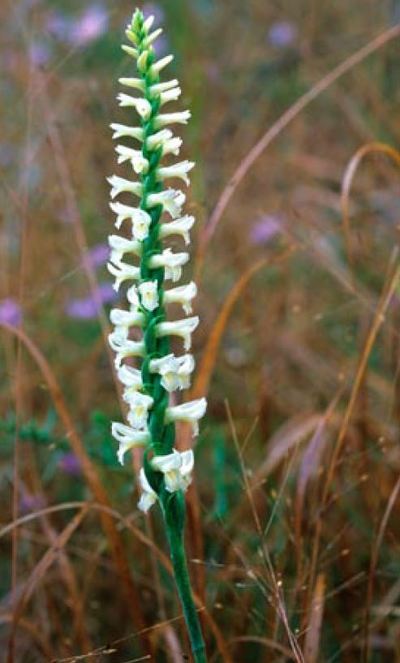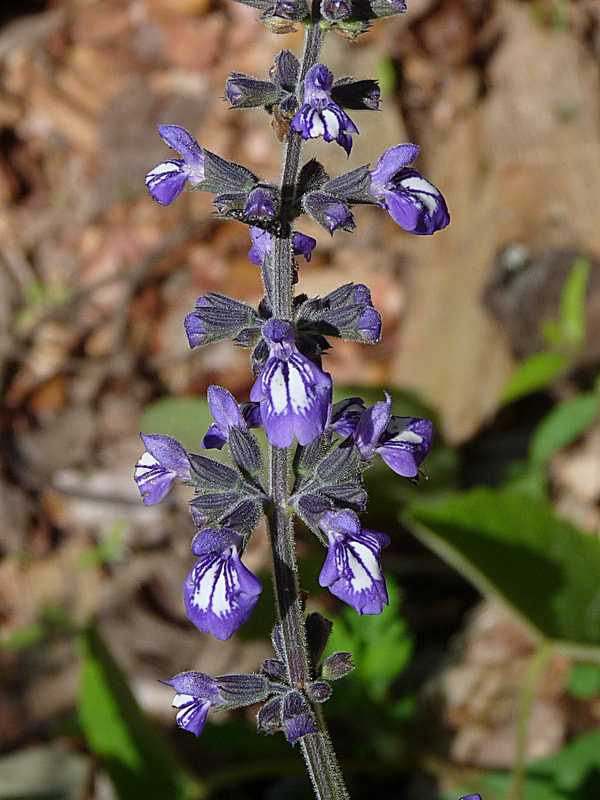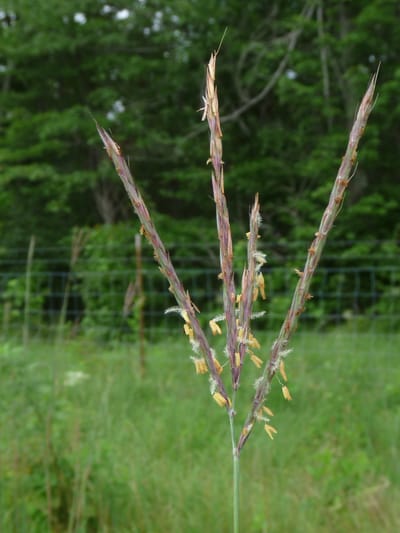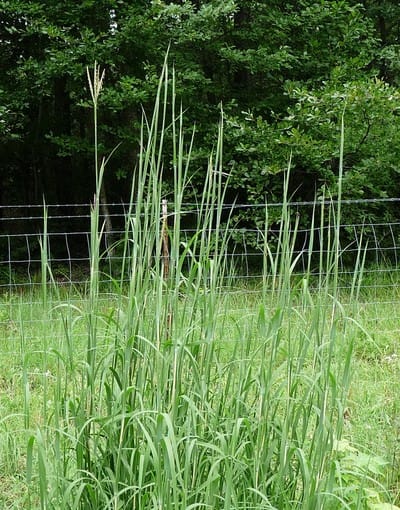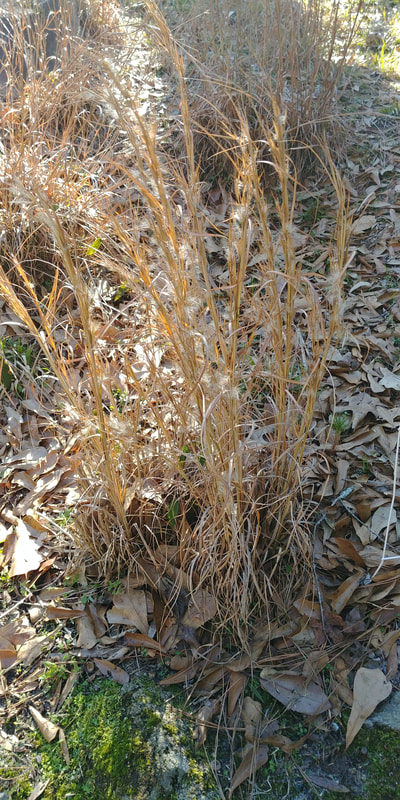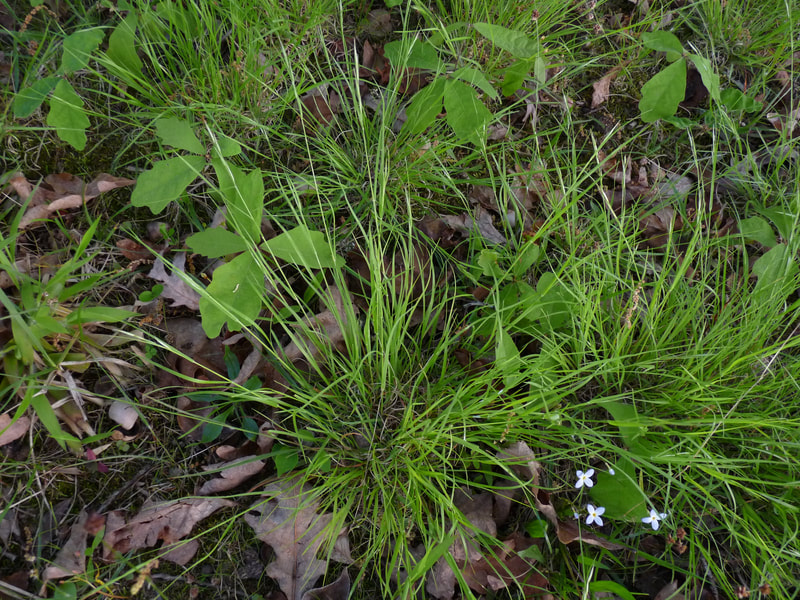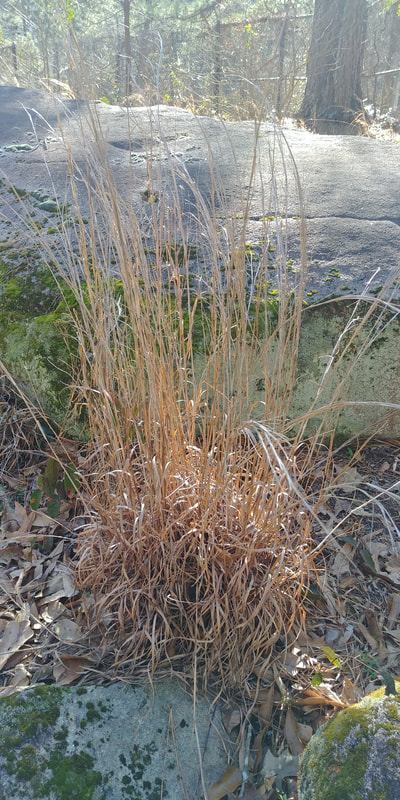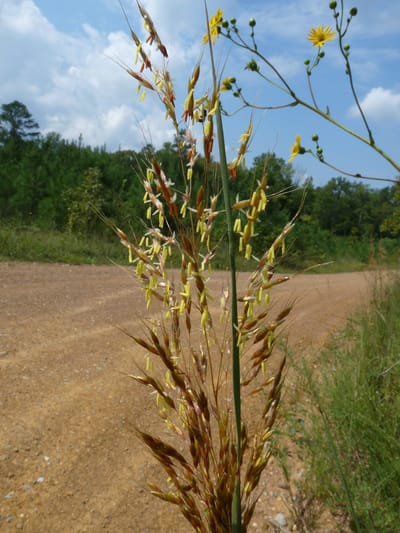Cumberland Plateau/Ridge & Valley Calcareous Prairies and Barrens (Coosa Prairies)
|
Calcareous prairies and barrens (Coosa Prairies/Floyd County Prairies) are highly unusual, rare communities prairies and barrens that grow over calcareous shale and limestone in Floyd County, Georgia, in the Coosa River watershed. The rocks weather to shrink-swell soils that create difficult growing conditions for trees and promote the development of prairies, particularly where there is occasional fire. Barrens grow where soils are thin and gravelly. Deeper soils promote dry prairies, and transition to wet prairies in moist sites. Different plant assemblages - often with rare plants and plants more common to the midwest - grow in each of the differing soil and moisture conditions.
|
|
Indicator species: Beyond the grasses and forbs characteristic of all prairies, species that prefer calcareous habitats, as shown in list below.
What's special: These prairies are very rare and diverse. Many rare plant species, including endemics (found nowhere else), and two critically imperiled plant assemblages grow here. Some species are disjunct - found in the midwest, but few places in between - and others are common in more midwestern prairies, making Georgia a special outpost. Prairie plants attract pollinators and insects, and are habitat for many birds and small mammals.
Related to: As dry prairie soils become thinner, they grade into Calcareous Glades and Barrens (Cedar glades). Wet prairies that are not exposed to fire grade into Flatwoods, and are sometimes embedded within them.
Learn MORE HERE about plant adaptations to rocky places.
What's special: These prairies are very rare and diverse. Many rare plant species, including endemics (found nowhere else), and two critically imperiled plant assemblages grow here. Some species are disjunct - found in the midwest, but few places in between - and others are common in more midwestern prairies, making Georgia a special outpost. Prairie plants attract pollinators and insects, and are habitat for many birds and small mammals.
Related to: As dry prairie soils become thinner, they grade into Calcareous Glades and Barrens (Cedar glades). Wet prairies that are not exposed to fire grade into Flatwoods, and are sometimes embedded within them.
Learn MORE HERE about plant adaptations to rocky places.
|
Plants
Click on a plant name to see images. Plant lists in order of scientific name. Terms such as "rich", "calcareous" and "mafic" are from The Flora of the Southern and Mid-Atlantic States, here. Wildflowers Barrens milkweed Asclepias hirtella (limestone) Green milkweed Asclepias viridiflora (dry prairie, esp. over mafic or calcareous) Green antelope-horn milkweed Asclepias viridis (mafic or calcareous rock) Blue wild indigo Baptisia australis (dry prairie) Prairie bluehearts Buchnera americana (dry prairie; limestone or mafic) Alabama leatherflower Clematis socialis (calcareous) Woodland coreopsis Coreopsis major Prairie purple coneflower Echinacea simulata Tall thoroughwort Eupatorium altissiumum Ashy sunflower Helianthus mollis (calcareous) Naked-stem sunflower Helianthus occidentalis Whorled sunflower Helianthus verticillatus (calcareous) Barrens St. John's-wort Hypericum sphaerocarpum (dry prairie, limestone) Rough blazing-star Liatris aspera (dry prairie) Dense blazing star Liatris spicata Scaly blazing star Liatris squarrosa Whorled loosestrife Lysimachia quadrifolia Mohr's Barbara's-buttons Marshallia mohrii (limestone, dolostone, calcareous) Virginia marbleseed Lithospermum virginianum (dry prairie; mafic and calcareous) Sundrops Oenothera fruticosa Common wild quinine Parthenium integrifolium Obedient-plant Physostegia virginiana (esp. calcareous or mafic) Virginia mountain-mint Pycnanthemum virginianum (wet prairie; calcareous or mafic) Prairie coneflower Ratibita pinnata (calcareous or mafic) Eastern coneflower Rudbeckia fulgida (dry prairie) Black-eyed Susan Rudbeckia hirta Nettle-leaf sage Salvia urticifolia (mafic or calcareous) Yellow sunnybells Schoenolirion croceum (wet prairie) Starry rosinweed Silphium asteriscus Prairie-dock Silphium terebinthinaceum (wet prairie; mafic or calcareous) White prairie goldenrod Solidago ptarmicoides (dry prairie; mafic, ultramafic, or calcareous) Riddell's goldenrod Solidago riddellii (wet calcareous prairies) Stiff goldenrod Solidago rigida (mafic or calcareous) Great Plains ladies'-tresses Spiranthes magnicamporum (dry prairie; limestone) Grasses Big bluestem Andropogon gerardii Broomsedge Andropogon virginicus Poverty oat-grass Danthonia spicata Little bluestem Schizachyrium scoparium Yellow Indiangrass Sorghastrum nutans Prairie dropseed Sporobolus herolepis |
Representative Wildflowers in order by scientific nameRepresentative Grasses in order by scientific name
|

